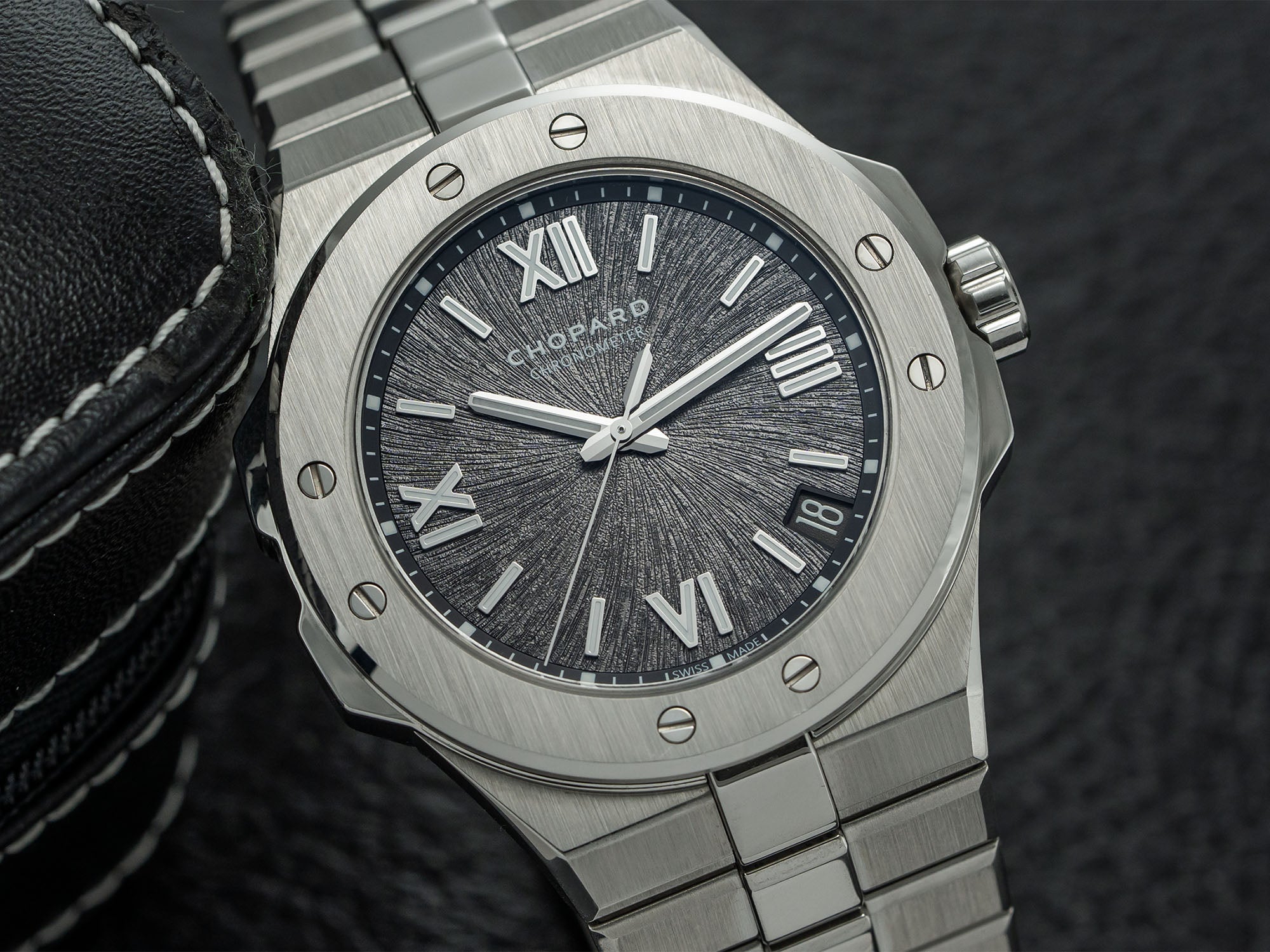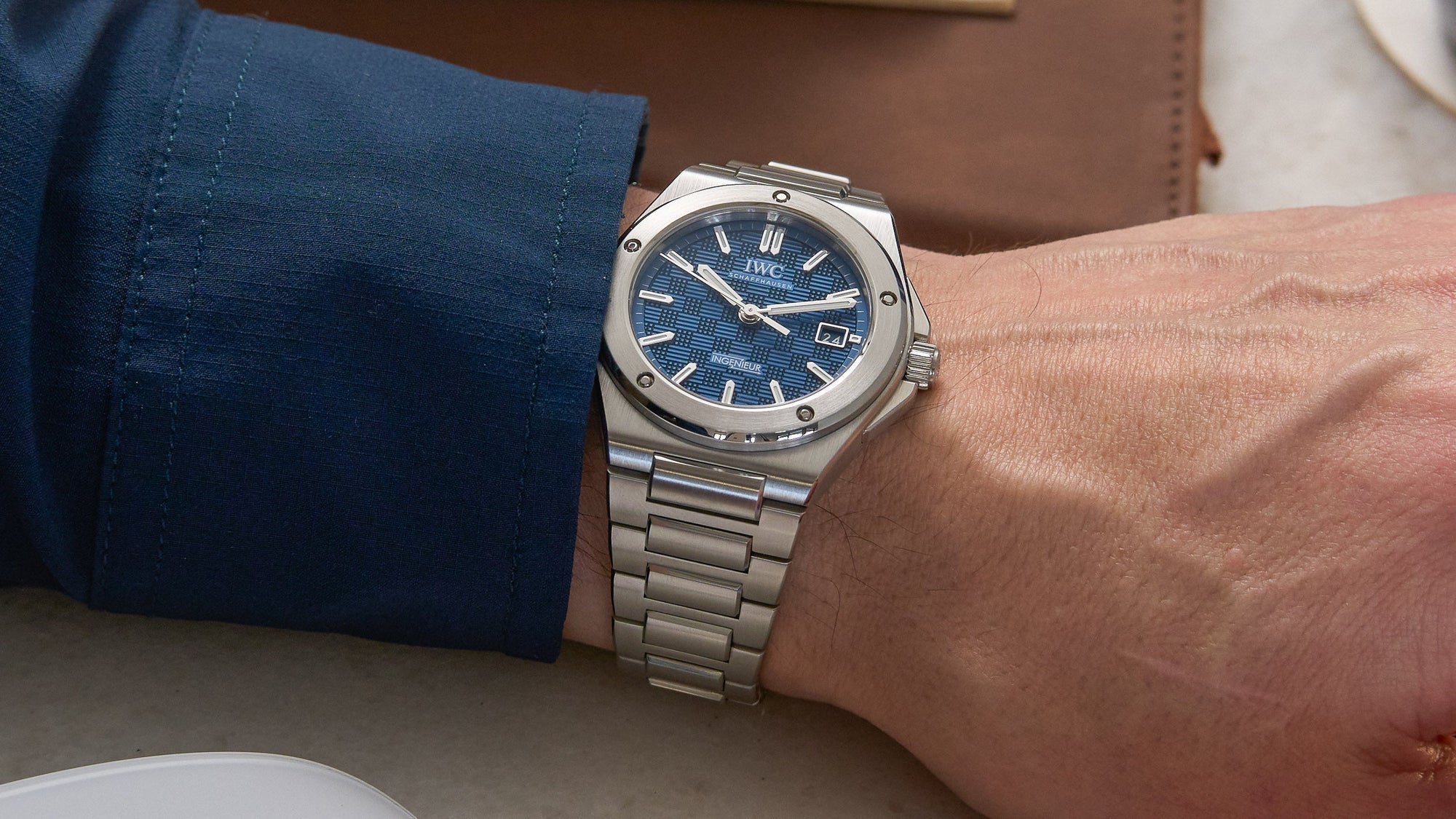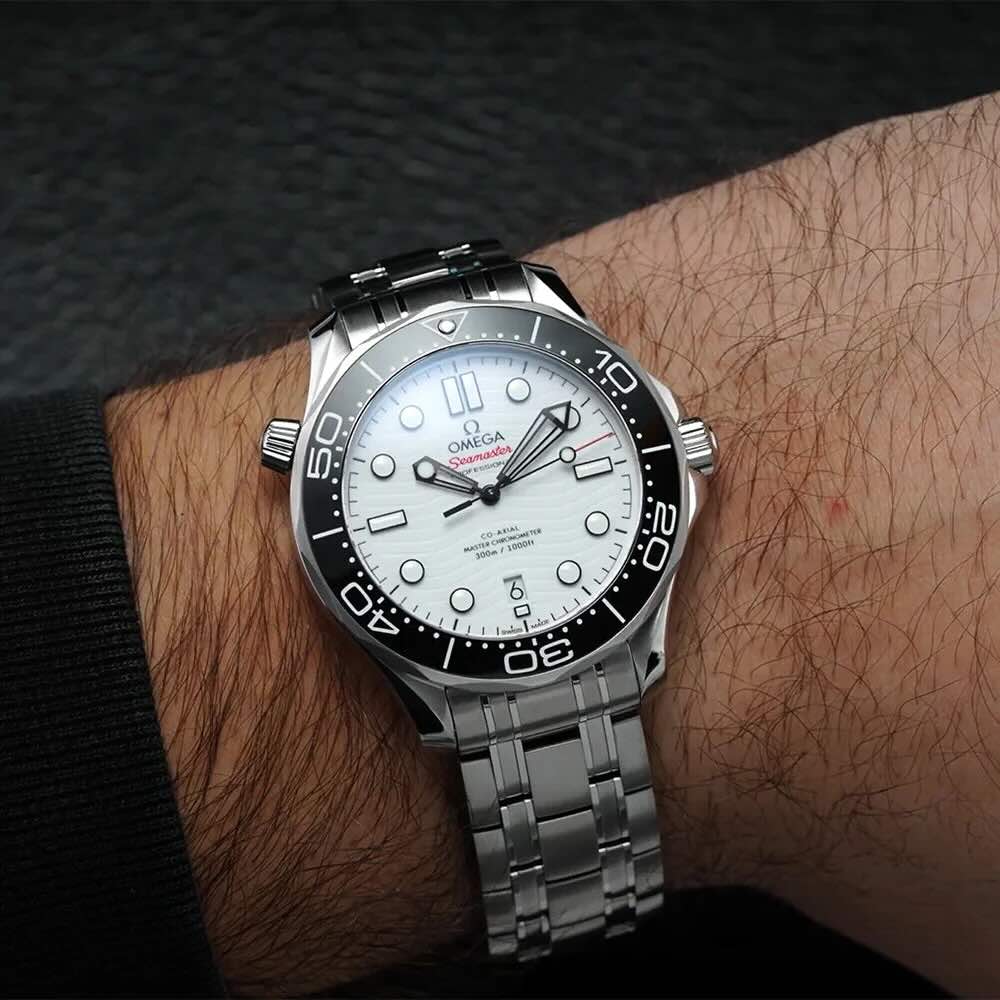Luxury Sport watches are probably one of the most popular categories out there with no shortage of excellent options from the most mainstream to the most niche independent watch brands. While names like the Rolex Submariner and Audemars Piguet Royal Oak are seen as the staple watches in this category to aspire to, we asked our editorial team here to share their personal picks in this admittedly crowded category. So without further ado, let's take a look at our favorite luxury sport watches.
Glashütte Original SeaQ Panorama Date

There are dive watches that you wear to go diving and there are dive watches that you wear — well, maybe afterward, to the country club where you go to talk about diving. The Glashütte Original SeaQ is a prime example of a watch that can actually fill both roles.
While it was established relatively recently, in 1994, Germany’s Glashütte Original can trace its lineage as far back as 1845, which also happens to be the year that watchmaking essentially arrived as an industry in Germany. As I cover in much greater detail in this article, a full century of horological tradition, centered in the town of Glashütte in the state of Saxony, came to an end with Germany’s defeat in World War II. It was replaced by a new era in which a state-owned conglomerate of once-independent heritage watch manufacturers, the Glashütter Uhrenbetriebe or GUB, shifted focus from artisanal techniques and luxuriously decorative timepieces to mass-produced tool watches for military and civilian customers. Many of the watches produced in the GUB era — spanning the Cold War years from 1951 up to the fall of the Berlin Wall in 1990 — are largely forgettable, but Glashütte Original, the luxury-watch firm that emerged from the dissolution of the GUB, has cherry-picked the most interesting and memorable of those utilitarian timepieces, produced in the late 1960s and ‘70s, for modern reimagining in its “Spezialist” series.

Serving as the base model for the Spezialist models is a single, now-collectible divers’ sport watch from 1969, the Spezimatic Type RP TS 200, which was the first dive watch produced in Germany (technically, at the time, East Germany) that met the international ISO 6425 standard. The Spezimatic Type RP TS 200, developed by the state-owned GUB, for recreational divers, was released in 1969, and its modern predecessor joined the Glashütte Original portfolio in 2019. Its round case, here in brushed and polished stainless steel with rose-gold details, measures 43mm in diameter, and the unidirectional dive-scale bezel (in rose gold, like the screw-down crown) includes a black ceramic insert. The galvanized grey dial sports a distinctive, luminous-treated, gilt-edged handset and an outsized “Panorama” date window at 4:30. Like its brethren in the Spezialist collection, the SeaQ meets the (German) DIN 8306 and (international) ISO 6425 standards for dive watches, and its solid engraved caseback protects the in-house Glashütte Original Caliber 36-13, with its lengthy 100-hour power reserve, from water pressures down to 300 meters. The watch is mounted on a gray synthetic strap that carries forth the sober tones of the dial. — Mark Bernardo
Omega Seamaster Diver 300M

For my luxury sport watch pick I am going to err on the side of the obvious and go with a watch that I sort of have, just not in the exact same configuration: That would be the Omega Seamaster Diver 300m. Sure, you must be thinking to yourself "Ok, I get that this is a luxury watch and that it's a diver, but shouldn't you be choosing a fruit that's hanging even lower like...say...the Royal Oak? Isn't that really what this category is going for?" And to this fictional individual – who's dialogue I not only invented but will also reply to – I say that I can event my own rules if I so choose and given the fact that the Omega SMP300 is both a luxury watch and a sport watch by definition it counts and it rocks. The iteration I have in mind is the black dial "Bond" version which plays off of variants like the "No Time To Die" and the 60th Anniversary Bond SMP300. This watch is standard production and brings true everyday energy to the watch with its aluminum bezel (my green variant boasts a ceramic bezel), a smaller wave pattern on the dial, and the mesh bracelet.

As a trio of differentiators, they compile to make this one of best dive watches on the marker full stop and one that could very well rival the likes of the Submariner. Add the Co-Axial movement inside and you stil get tons of value for the money for your luxury sports watch.However we choose to define the category here, I think this watch deserves more attention especially when you consider that it is fairly new. This is a great (and rare) example of a brand going back to the basics and getting close to perfection in doing so. —Danny Milton
Zenith Defy Revival

I’d be lying if I said there was a clear winner for me when it comes to luxury sport watches as there’s no shortage of them. For the purpose of this pick, I’m defining “luxury” as $6,000+ (that’s a lot of money). It’d be easy to pick something from Rolex or Omega, and you would definitely be well within your right to do so. All of my esteemed colleagues here also have strong cases for their own picks. However, the Zenith Defy Revival A3642 hits a couple extra notes for me that make a solid campaign.
While the Zenith Defy Revival wasn’t the first that came to mind, it is pretty high on my own personal list of favorite modern watches. But when thinking about the “best” luxury sports watch, there are certain criteria that must be met to truly take the top spot: comfortable size, a measure of toughness, and substantial water resistance. The Defy Revival A3642 accomplishes all of this in a way that I don’t think is talked about enough. When you get down to it, this is a full titanium watch designed to withstand shocks and drops, 300m water resistance, and a proven in-house automatic movement.
 Historically, the Defy line of watches were designed to be tough. The angular design even earned the French nickname “coffre-fort,” which roughly translates to “bank vault.” There are stories of the watchmakers throwing the watches out of windows to test shock protection. But that was then, this is now- and the watch has hardly changed.
Historically, the Defy line of watches were designed to be tough. The angular design even earned the French nickname “coffre-fort,” which roughly translates to “bank vault.” There are stories of the watchmakers throwing the watches out of windows to test shock protection. But that was then, this is now- and the watch has hardly changed.
What makes this the “best” luxury sports watch for me is the proven history of toughness alongside modern advancements and sensibilities. This watch is as if Zenith in 1969 had modern manufacturing capabilities. The full Titanium construction gives the watch a lightness and comfortability that I want out of a watch while I’m doing sports things. Not to mention, the fact that this watch is 37mm across and 44mm lug-to-lug adds to the comfort conversation: this watch disappears when you put it on, and not only from a wearability perspective. The bead-blasted finish gives the watch a low-key sensibility when you might not want a flashy piece of brushed and polished metal on your wrist.
Many luxury sports watches are going to have a lot of similar characteristics. That’s fine if you’re into that; you can split your hairs all you want amongst the usual suspects, but the Revival Shadow isn’t just different for the sake of being different, this is a watch that Zenith made with a purpose over 50 years ago and stuck with it. — Jonathan McWhorter
IWC Ingeniuer 40

To say that the marketplace is ripe with temptation in terms of luxury sport watches is seriously underselling things, but narrowing it down to one is a bit more difficult than you might think. I mean, there are so many worthy picks out there, but where to start? Weeding out solid gold dive watches and the like, along with the usual aspirational suspects from Audemars Piguet, Patek, and Vacheron, I was still faced with a strong list of contenders. There’s my undying love for the quirky, retro-tastic Zenith Defy Revival models. Girard-Perregeaux has the right-sized integrated Laureato, at 38mm, one hell of a luxury watch from a more under-the-radar brand.
The Breitling Chronomat has plenty of wrist presence (and that sublime rouleaux bracelet), even at 36mm, to say nothing of the larger variants. The same goes for the 36mm Hermès Cut, a beautifully cohesive design that I still crush on more than a year after its introduction. But if I had to winnow things down to a single daily driver (and I would, considering the price points in play here), it has to be IWC’s reinvented Ingenieur, specifically the titanium variant introduced at launch in 2023. This is a watch I could easily wear all day, every day, in almost any circumstance.

The Ingenieur was first developed in the 1950s for technical and scientific applications, possessing, along with Rolex’s famed Milgauss, a heightened resistance to magnetic fields, due to its soft iron inner Faraday cage construction. But the look we most associate with the Ingenieur didn’t appear until 1976, with the introduction of the striking Ingenieur SL, completely changing up the dressy aesthetic to one that was resolutely forward-thinking. Gone was the traditional round case, and in its place was a modernist integrated profile, penned by none other than Swiss design legend Gerald Genta.
After establishing his design cred with the Audemars Piguet Royal Oak and the Patek Philippe Nautilus, Genta sketched another winner with the new Ingenieur. Sleek and sinuous, the first reference, the 1832 “Jumbo”, was notable for its wide, 5-bored circular bezel and beautifully sculpted H-link bracelet. Given its Genta origin story, collectors consider it a design classic, and choice examples are typically priced at $30,000 and up. While the 1832 is now highly desirable, it was met with a lukewarm reception at the time, with less than 1,000 examples produced. The Ingenieur has seen a slew of variations in the ensuing years, some more successful than others, but none with that original Genta swagger. That is, until Watches & Wonders 2023.IWC rebirthed the Ingenieur at that show in a 40mm case, with several steel models, and a new titanium variant, which has a monochrome menace that stands apart from the others.

At first blush, your brain doesn’t connect the visual weight of the watch with its actual weight, such is the disorienting feel of titanium. The watch keeps all the good stuff from the original design, while jettisoning the not-so-good, including the awkward wear experience from the 1832’s jutting end link and girthy case. Truly, the bracelet now has a fantastic drape that makes it a pleasure to wear, especially in titanium, and a 120-hour power reserve is nothing to sneeze at. There’s plenty of visual interest from the dial’s texture, with its engraved crosshatch pattern, and the screwed in bezel is handsome, while aiding in the water resistance rating of 100 meters. It nails the brief of a forward-thinking technical timepiece, one that’s strong, lightweight, sculpted, and highly resistant to magnetism. The design and weight (or lack thereof) make this titanium Ingenieur a watch you never want to take off, not something that can be said for every integrated luxury watch. But really, it just looks devastating, in the best possible way, still futuristic nearly 50 years after Genta’s original design was born. — D.C. Hannay
Omega Seamaster Aqua Terra 150M 30MM

For my top luxury sports watch pick, I’m going with the update to the Omega Aqua Terra collection, which I didn’t know I was waiting for, with the brand’s new 30 mm take on the line. The brand’s versatile everyday diver already had pretty great sizing options, ranging from 34mm all the way up to 41mm, but this summer, the brand launched an even smaller size option, gunning for the hearts of teeny tiny watch lovers such as myself. And I have to admit, this new sizing avenue the brand is strolling down is one I’m super excited about, not only for what it represents for the Aqua Terra brand, but also for what it might mean for the rest of the brand’s offerings.

Omega really did its big one with its new teensy Aqua Terra, not just soft-launching some smaller options and gauging interest. The brand has unleashed a total of twelve unique 30mm models, ranging from the ruggedly sporty and minimal to the ostentatiously luxurious. The brand’s highly popular black laquer dial variation in steel has been minified (which is among my favorites in the bunch), but Omega has also included the more jewelry-oriented experiments on the line, which we’ve seen done across the collection, in combinations of precious metals and diamond-set indices and diamond-clad bezels. But the most significant update to the line lies with the movement. Omega has packed its tiny Aqua Terra with the brand new Co-Axial Master Chronometer calibre 8750, which is METAS-Certified and incredibly thin. Usually, when a brand downsizes a piece, I typically expect there to be some compromising in the movement department, as if the entire industry has resigned that people who like small watches are unconcerned with the mechanical inner workings of watches. It’s totally refreshing to see Omega actually choosing to go down the road less travelled, and actually create a new, innovative movement for a watch of this size.
This also means the brand has an entirely new caliber to lean on and equip other small watches with. The 30mm Aqua Terra has a slim profile of just 10.55mm, and maintains the minimal dial layout we’re used to seeing across the standard collection. Additionally, it is still water resistant up to 150 meters, even for its most luxurious options, and each bracelet features the foldover butterfly clasp with an easy-adjustment system that’s made the collection such a hit. My two favorites in the small series so far are the aforementioned black lacquer dial steel model and the two-tone Moonshine gold and steel. Teeny-tiny watch stans buckle up – we can only expect more on the way from Omega. — Erin Wilborn
Chopard Alpine Eagle 41

The Chopard Alpine Eagle in a luxury sports watch that has only gotten better since its debut in 2019. A spiritual successor to the St. Moritz from the 80s and 90s, the Alpine Eagle has that integrated bracelet design coupled with one of the most beautifully done textured dials out there. The result is a watch that exudes high-end finishing due to the use of Chopard’s proprietary Lucent steel which is not just 50% harder and more corrosion-resistant than standard steel but also has a noticeably more lustrous sheen. The case here measures 41mm wide and just 9.7mm thick with 100m of water resistance. From the case back you can see the COSC-certified Chopard 01.01-C movement which operates at 4 Hz and has a 60 hour power reserve. Finishes here are nice as well with snailing and circular grained finishes throughout.
The Chopard Alpine Eagle’s three-link bracelet is beautiful and really does need to be seen in person to be fully appreciated, in my opinion. The polished center links add enough shine while the brushed outer links and case still keep the sport watch attitude there. The dials are inspired by the iris of an eagle’s eye which is a nice story but the execution is what matters. And the execution is magnificent. — Bilal Khan





















































0 Comments